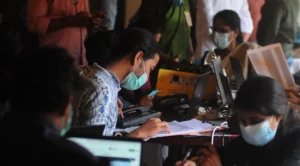Epidemics That Didn't Happen
Case Study:
Conclusion
These epidemics that didn’t happen show that smart investments, improved health systems and better coordination and communication by determined leaders can find, stop and prevent outbreaks.
A successful outbreak response is multifaceted. It requires a diverse set of actions—from epidemiologic investigation to developing and implementing prevention measures with affected communities—and is coordinated across a range of actors. Even effective responses are not perfect—most responses featured in this report had at least one weakness, or bottleneck. But just as there’s no one action that can prevent every epidemic, disasters rarely if ever happen because a single thing goes wrong. Consistent investment in preparedness builds strong systems that are able to adapt and overcome weaknesses.

There is no one-size-fits-all approach, but we can learn important lessons from what has worked in the past:
Focusing on early detection and response stops outbreaks before they start.
One way of accelerating this is 7-1-7, a global goal for containing disease outbreaks. A timeliness metric, 7-1-7 proposes that all public health threats should be detected within 7 days of emergence, that public health authorities should be notified within 1 day of detection and that all necessary early response actions are completed within 7 days of notification. Where other measures of success score theoretical capabilities, timeliness measures a system’s actual performance in real-time, under pressure. 7-1-7 helps countries identify bottlenecks and facilitators and in turn helps justify investments targeted to specific areas of improvement.

Fast, flexible funding can make or break a response.
Oftentimes, bottlenecks are simple but easily missed pieces of the puzzle: not having enough money to get in the car and investigate an outbreak, or even credit for SIM cards to provide easy communication between members of an investigative team. Sometimes making sure that epidemics don’t happen is as simple as having fast, flexible money—whether to conduct thorough case investigation and contact tracing of Ebola cases or to swiftly investigate and vaccinate people in a village against rabies.
Preparedness and response are most effective when they’re prioritized at the country, sub-national, and community levels.
Technical rigor, political leadership and operational excellence are all needed to manage the complexity of strengthening health security, building trust and improving accountability. Real-world efforts have demonstrated that national and subnational improvements to preparedness are more sustainable than top-down global efforts. Governments and the global partners who support them can take five actions to make steady and sustained progress toward protecting their people, their neighbors and the world.


Protecting health care workers—the frontlines of outbreak detection—makes everyone safer.
Investments in health facilities and health care workers will contribute to stronger global health security and make the world safer from the next epidemic threat. Ensuring primary health care centers are safe protects health care workers and enables them to detect and respond to public health threats before they spiral out of control.
The responses featured in this report all demonstrate a strong interplay of the 7 Key Preparedness Factors, improvements to which are foundational for strengthening preparedness.
- Risk Assessment & Planning
- Emergency Response Operations
- National Laboratory System
- Disease Surveillance
- National Legislation Policy & Financing
- Human Resources
- Risk Communications
These essential elements of public health systems only work when accompanied by good governance, strong leadership and consistent funding and personnel.
As the world compiles lessons from COVID-19 and other epidemics, it’s become clear that improving preparedness and response requires a whole-of-society effort.
IS YOUR COUNTRY READY FOR THE NEXT EPIDEMIC?








